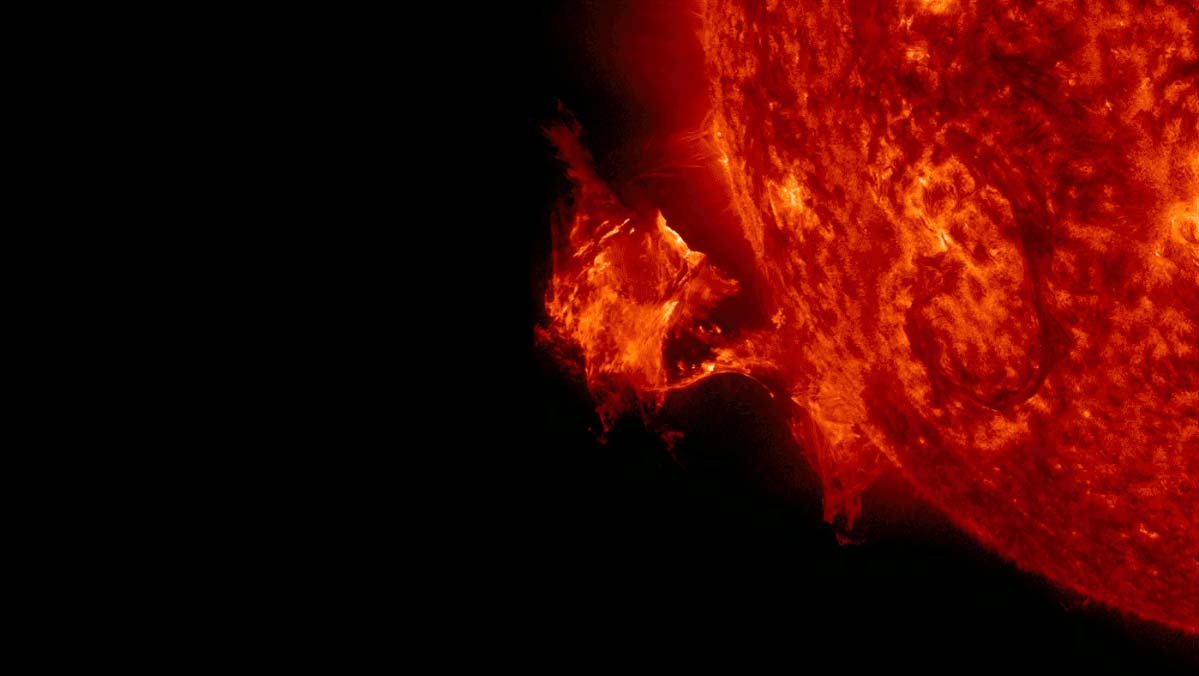A solar eruption on Sept. 26, 2014, seen by NASA’s Solar Dynamics Observatory. If erupted solar material reaches Earth, it can deplete the electrons in the upper atmosphere in some locations while adding electrons in others, disrupting communications either way. (NASA)
Home A solar eruption on Sept. 26, 2014, seen by NASA’s Solar Dynamics Observatory. If erupted solar material reaches Earth, it can deplete the electrons in the upper atmosphere in some locations while adding electrons in others, disrupting communications either way. (NASA) A solar eruption on Sept. 26, 2014, seen by NASA's Solar Dynamics Observatory. If erupted solar material reaches Earth, it can deplete the electrons in the upper atmosphere in some locations while adding electrons in others, disrupting communications either way. (NASA)


